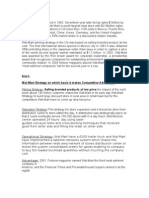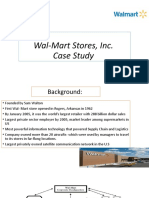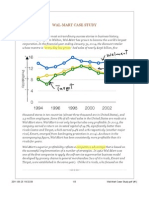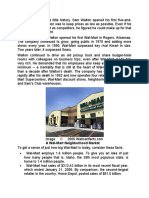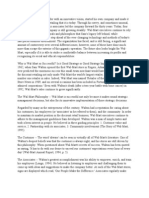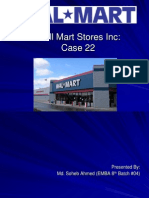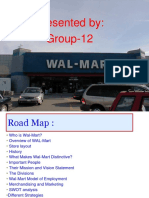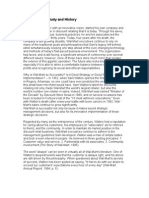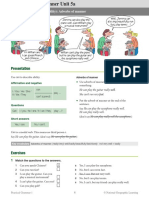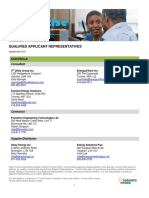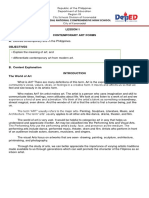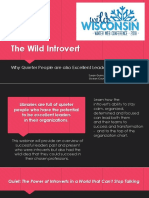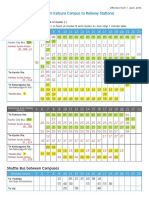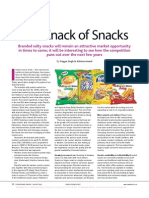Chapter 1.
Th VatuneoMahqgement Control Systems
31
Case 1-2
|idy
Wal-Mart Stores,Inc.
in 1962. Seven
Founded by Sam Walton, the first Wal-Mart store opened in Rogers, Arkansas,Wal-Mart
teen years later, annual sales topped $1 billion, Bythe end of Jançary 2005, Stores,
Inc. (Wal-Mart) was the world's largest retailer. with $288 billion in sales. (See Exhibit 1 for
comparative financial data.) In 1995,Wal-Mart sold nogrocery: by 2005, the company was the
market leader among supermarkets in the US. Wal-Mart was the largest private-sector em
ployer in the world. The information technology that powered Wal-Mart's supply chain and lo
gistics was the most powerful, next only to the computer capability of the Pentagon. The com
pany owned over 20 aircrafts-which were used by managers to travel to its stores in far-fung
locations. The number of miles flown by Wal-Mart managers in the company-owned aircrafts
would place Wal-Mart on par with a medium-sized commercial airline. Wal-Mart had the
largest privately owned satellite communication network in the U.S. and broadcasted more
television than any network TV!
Wal-Mart's winning strategy in the U.S. was based on selling branded products at low cost.
The
Each week, about 138 million customers visited aWal-Mart store somewhere in the world.
EXHIBIT 1 Comparative Finaneial Data on Selected Companies
Five-Year Average: 1999-2004
Wal-Mart Home Depot Kroger Costco Target
21.2 19.7 20.1 13.4 17.3
Return on equity (percentage) 4.5 11.9 6.8
11.6 13.7
Sales growth (percentage) 10.0 13.3
Operating income growth (percentage) 11.1 15.9 (13.8)
2004 Data
288.2 73.1 S6.4 48.1 46.8
Sales (SB)
As percentage of sales: 87.5 68.7
76.3 66.6 74.7
Cost of goods sold 22.7 33.4 25.3 12.5 31.3
Gross margin 22.6 20.0 9.6 20.9
17.8
Selling and administration 5.9 10.8 1.5 2.9 7.7
Operating income 1.8 6.8
Net Income 3.6 6.8 (0.2)
Inventory turnover 7.5 4.8 9.8 11.3 S.9
23.2 22.1 (2.5) 12.8 1S.6
Return on equity (percentage)
Ths case was writen by Professor Vijay Gonndarajan and lulie BLang (T93)of the Tuck School of Business at Dart
mouth Trustees of Dartmouth College
Sources: The Quest for Global Dominance: Transforming Global Presence into Global Competitive Advantage by
Vijay Govndarajan and Anil K. Gupta 2001 by lohn Wiley &Sons, Inc Chapter 4 What Management is: How it
works and why it's everyone's business by joan Magretta, ©2002 The Free Press. Sam Waiton, Made in America My
Story by Sam Walton,
O 1992 Doubieday. http://www. walmart.com
i"wal Around The World The kconomst December 6, 2001, and "Can Wal Mart Conquer Markets Outside The US
Financial Times, January 7, 2003
� Systems
32 Chapter One The Nature of Management Control
million associates (Wal-Mart's term for employees) worldwide
company employed more than 1.6
through more than 3,700 storesin the United States and more than 1,600 units in Mexico, Puerto
Rico, Canada, Argentina, Brazil, China, Korea, Germany, and the United Kingdom. (The
ternational store opened in Mexico City in 1991.)Wal-Mart alsoobtained a 38% controllingfirstsh in-
in the Japanese retail chain Seiyu in order to capture aslice of the world's second largest market.
estimated at $1.3 trillion.
In 2002, Wal-Mart was presented with the Ron Brown Award for Corporate
presidential award that recognizes companies for outstanding achievement spot
in employee
on i o
Leadership, a
and
community relations. In 2004, Fortune magazine placed Wal-Mart in the to
Admired Companies" list for the second year in a row.
By 2005,Wal-Mart held an 8.9% retail store market share in the United States, Put simel
of every $100 that Americans spent in retail stores, $8.9 was spent in Wal-Mart. Procto
Camble,Clorox, and Johnson &Johnson were among its nearly 3,000 suppliers. Though Wal.
deliberatelv er
Mart may have been the top customer for consumer product manufacturers, it
Sured it did not become too dependent on any one supplier; no single vendor constituted moe
than 4 percent of its overall purchase volume. In order to drive up supply chain efficiencies
Wal-Mart had also persuaded its suppliers to have electronic "hook-ups" with its stores and
adapt to the latest supply chain technologies like RFID which could increase monitoring and
management of the inventory.
Wal-Mart used a'saturation" strategy for store expansion. The standard was to be able to drive
from adistribution center to a store within a day. Adistribution center was strategically placed
so that it could eventually serve 150-200Wal-Mart stores within a day. Stores were built as far
away as possible but still within a day's drive of the distribution center; the area then was flled
back (or saturated back) to the distribution center. Each distribution center operated 24 hours a
day using laser-guided conveyer belts and cross-docking techniques that received goods on one
side while simultaneously filling orders on the other. Wal-Mart's distribution system was so effi
cient that they incurred only 1.3% of sales as distribution costs compared to 3.5% for their near
est competitor.
The company owned a fleet of more than 6,100 trailer trucks and employed over 7,600 truck
drivers making it one of the largest trucking companies in the United States. (Most compet
tors outsourced trucking.) Wal-Mart had implemented a satellite network system that allowea
information to be shared between the company's wide network of stores, distribution centers
and suppliers. The system consolidated orders for goods, enabling the company to buy Tun
truckload quantities without incurring the inventory costs.
In its early years, Wal-Mart's strategy was to build large discount stores in Smallrural
towns. By contrast, competitors such as Kmart focused on large towns with populations
greater than 50,000. Wal-Mart's marketing strategy was to guarantee "everyday low prrices"as
a Nay to pull in customers. Traditional discount retailers relied on advertised "sales."
Management Systems
Each store relative toits in
ventory
constituted an
investment center and was evaluated on its profits expenses.
investments. Data from over analyzed,
and profit and loss were collected, 5.300 individual stores on items
and transmitted such as
electronically sales,
on a real-time
� Chapter 1 TheNature of Management ControlSystems 33
basis, rapidly revealing how aparticular region. district. store, department within a store, or
item within a department was performing. The information enabled the company to reduce the
likeliho0d of stock-outs and the need for markdownson slow moving stock,and to maximize in
ventory turnover. The data from outstanding" performers among5,300 stores were used tO im
prove operations in "problem" stores.
One of the significant costs for
retailers was shoplifting, or pilferage. Wal-Mart addressed
this issue by instituting a policy that shared 50 percent of the savings from decreases in a
store's pilferage in a particular store, as compared to the industry standard, among that store's
employees through store incentive plans.
Early in Wal-Mart's history, Sam Walton implemented a processrequiring store
managers to
fllout "Best Yesterday" ledgers. These relatively straightforward forms tracked daily sales per
formance against the numbers from one-year prior. Recalled Walton, "We were really trying to
become the very best operators-the most professional managersthat we could. . ..Ihave al
ways had the soul of an operator, someone whowants to make things work well, then better, then
the best they possibly can." His organization was really a store within a store," encouraging de
partment managers to be accountable and giving them an incentive to be creative. Successful
experiments were recognized and applied to other stores.One example was the "people greeter,"
an associate who welcomed shoppers as they entered the store. These greeters not only provided
a personal service, their presence served to reduce pilferage. The "10-Foot Attitude" was another
customer service approach Walton encouraged. When the founder visited his stores, he asked as
sociates to make a pledge, telling them, "Iwant you to promise that whenever you come within
10feet of a customer, you will look him in the eye, greet him, and ask him if you can help him."3
In return for employees' loyalty and dedication, Walton began offering profit sharing in
1971.Every associate that had been with us for at least one year, and who worked at least
1,000hours a year, was eligible for it," he explained. "Using a formula based on profit growth,
we contribute a percentage of every eligible associate's wages to his or her plan, which the as
sociate can take when they leave the company, either in cash or in Wal-Mart stock." In fiscal
2005, Wal-Mart'sannual company contribution totaled $756 million.
Wal-Mart also instituted several other policies and programs for its associates: incentive
bonuses, a discount stock purchase plan, promotion from within, pay raises based on perfor
mance not seniority, and an open-door policy.
Sam Walton, the founder of Wal-Mart, believed in being frugal. He drove an old beat-up truck
and flew economy class, despite being a billionaire. He instilled frugality as part of Wal-Mart's
DNA.
Discussion Questions
1. What is Wal-Mart's strategy? What is the basis on which Wal-Mart builds its competitive ad
vantage?
2. How do Wal-Mart's control systems help execute the firm's strategy?
loan Magretta, What Management Is: How It Works and Why lt's Everyone's Business (The Free Press, 2002),189.
http://www.walmart.com
*Sam Walton, Sam Walton, Made ln America: My Story(Doubleday, 1992), 132.


